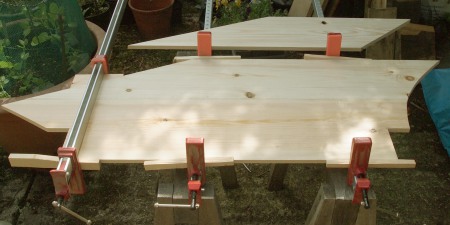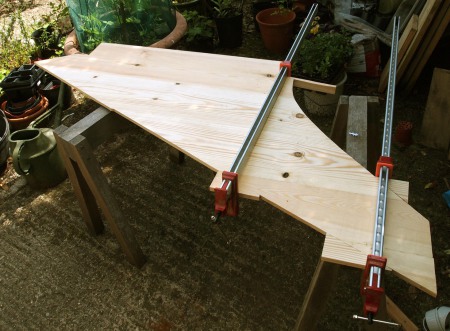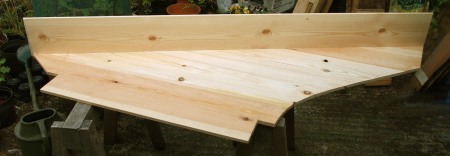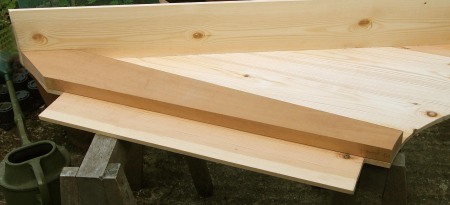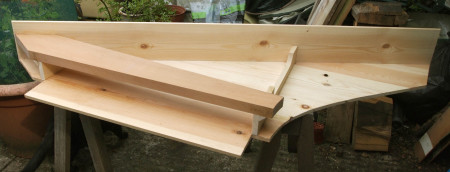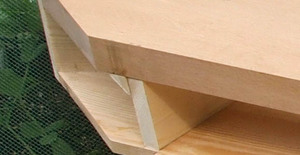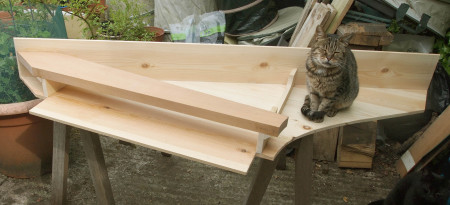
Making a Start
We believe that the first spinets in the graceful shape we now call 'English' were made around 1730 by the Italian builder Giralomo Zenti. He came to the Royal Court in London in 1664, and it is likely that he introduced the design to England in that year, although no London-made instruments by him are known. Is is therefore not surprising that the design inherits several of the features of the Italian harpsichord, notably the 'box' register for the jacks, and the constuction based around the bottom. The decorative scrolls at the ends of the keyboard, now forming part of the keyrame, are also relics of the Italian 'inner/outer' construction.
We therefore begin with the bottom. This is made up from several planks of ordinary ½" softwood, glued together. The back (spine) and sides are glued and nailed around the bottom, which therefore has the size and shape of the finished instrument, minus the thickness of the spine (also ½" softwood) and the sides, which are rather thinner.
The grain of the Blunt bottom is parallel to the keyboard. The required number of boards are thicknessed to ½", cut to shape, and then glued and clamped together.
Note the use of triangular blocks, temporarily fixed with panel pins, to give parallel edges for clamping.
After trimming the edges of the bottom, the spine is then glued and nailed to the back edge.
Cut and trim the wrestplank (1¼" beech) to match the base exactly.
The two principal braces, one at each end of the keyboard, are cut, trimmed and glued in place, followed by the wrestplank, which sits on top of them. The joints between the wrestplank and the braces are probably the most critical in the whole construction.
Note the triangular fillet to reinforce this joint.
It looks like a spinet already!
